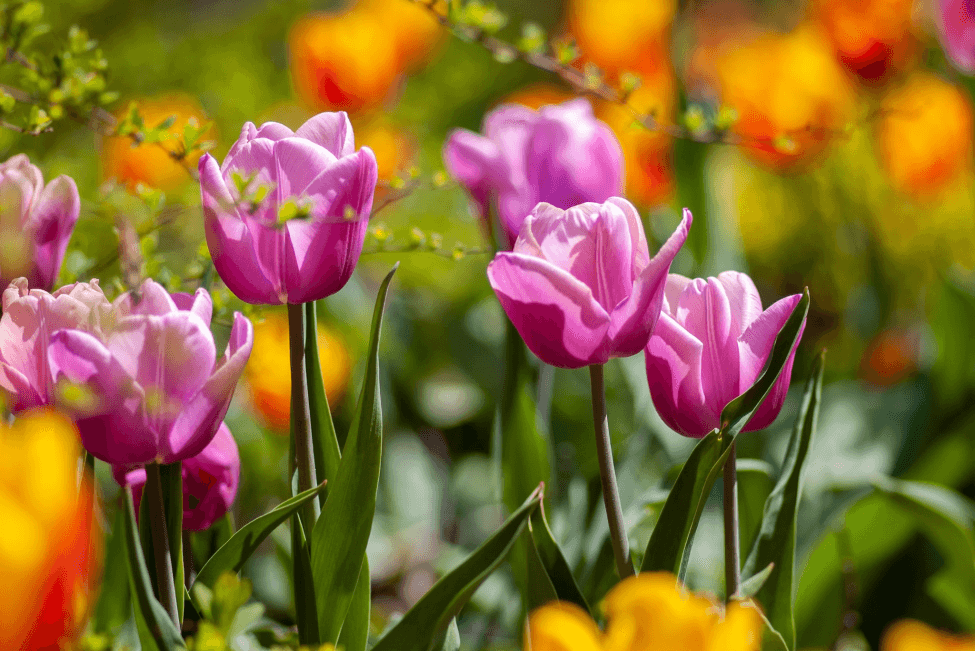
Prepping the garden for spring doesn’t have to be complicated: just clear away leaves, twigs and debris with a simple sweep! If the weather permits it, rake your lawn and remove old weeds or flower pots as part of this task.
1. Remove Winter Debris
Winter’s worth of fallen leaves, twigs, pinecones and plant debris can quickly fill gutters and cause lawn issues in spring. Raking lawn and garden beds helps clear away this waste before it rots or washes into your soil and hinders growth (source: https://www.myjournalcourier.com/news/article/leaving-the-leaves-18475184.php). Ranking also provides an opportunity to take out bare spots and spread some mulch – keeping plants happy over winter while helping them rebound strongly come spring!
As part of your yard cleanup efforts, take an inventory and give all tools a good cleaning. Dirty tools harbor diseases and bacteria which could spread into other parts of your garden; a proper clean will keep them working for years. If replacing tools isn’t an option for you, some regular disinfecting could keep them functioning optimally for years.
2. Prepare Your Soil
Before planting seeds, seedlings or vegetables this spring, it is vitally important to prepare the soil by adding amendments such as compost. This ensures your plants will get off to a healthy start and can reach their maximum growth throughout the season.
First, clear away debris and weeds from garden beds and, if it is not too cold outside, sweep up and rake borders and beds. Additionally, this provides an opportunity to inspect fencing, furniture or hardscaping for damage and make any necessary repairs.
Once your soil is manageable like this, dig in a layer of organic matter. This will improve its structure while adding nutrition for microorganisms and other beneficial soil-dwelling organisms. These materials could include leaves, compost, manure and seaweed (which contains micronutrients). You could also consider sowing quick cover crops like clover, oats, annual rye or wheat in early spring for maximum nitrogen fixation – when turned under they’ll return it all back into the soil.
3. Prepare Your Plants
Assessing what’s already in the garden can help you make informed decisions on how best to proceed this spring. This might mean clearing away overgrown perennials that have yet to bloom, dividing existing ones, or adding new ones into beds. Now is also a good time to create a compost pile by gathering grass clippings, vegetable peelings, paper and woody prunings into one big compost bin – it will supply plants with essential nutrients while keeping soil loose and manageable.
Don’t work the soil when it is too wet as doing so can compact it, damage its structure and suffocate its roots. Before digging, consider hiring garden care services to do the job. Additionally, ensure all tools used in gardening (shovels/rakes etc) have been thoroughly washed after each use to prevent disease-causing bacteria being spread to seedlings.

4. Prepare Your Containers
Many gardeners choose containers or pots as the perfect place to showcase our colorful displays, and spring is the ideal time for adding new hues. Before planting begins, though, take some time to clean your containers by using either a hose or bucket of water and rinsing out each container thoroughly – inside and out – using either the hose or bucket will help prevent disease or pests from returning over the winter season. It may also be wise to line your planters’ bottoms with plastic or metal so soil doesn’t seep into and cause rot over winter!
If the soil in your garden is like soupy mud pie, wait until it dries out before diving in. Soggy soil compacts easily and suffocates roots, so it is wise to wait for dry ground before digging. If working in wet conditions is unavoidable, use stepping stones or boards as barriers against compacted soil to avoid compaction of your garden’s bed.
5. Prepare Your Tools
Gardeners love getting into their gardens! But be wary: before diving right in, be sure that it is safe for your agricultural zone and that you understand which plants do well in that specific region.
An essential step to any spring clean-up process is removing annual flowers and vegetables that have withered and pruning perennials that require it. Removing winter mulch allows new shoots of growth to penetrate – just wait until the ground has warmed sufficiently so you can work in without compacting it too much!
Early spring is an excellent time for planting shrubs and perennials as well as cool-season annuals, giving the plants time to become established before summer weather hits and providing protection from late frosts.
When planting, always follow the advice in the seed packet or other information from a grower to ensure your seeds or transplants thrive and survive in your climate. Doing this ensures the success of both seeds or transplants being planted in your environment.
Emily Hawthorne
Related posts
Stay connected
- How LoveOn Chat Is Becoming the Most Versatile AI Companion for Digital UsersThe internet keeps shifting toward hyper-personal interaction, and AI companions are at the center of this shift. What used to be simple chatbots are now evolving into emotionally aware, adaptive, and multi-functional digital partners. Among the new generation of platforms, LoveOn Chat is becoming one... The post How LoveOn Chat Is Becoming the Most Versatile […]
